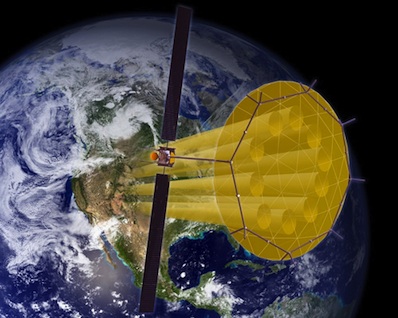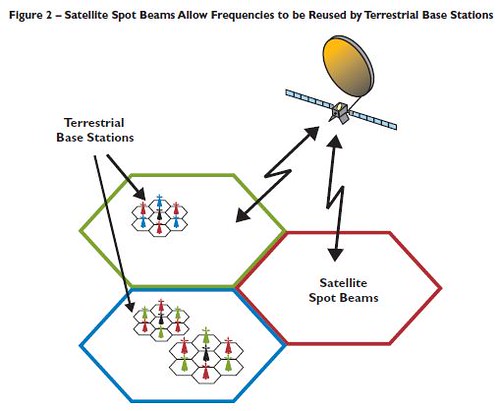LightSquared: In Trouble?
Posted by Sam Churchill on January 13th, 2011The FCC could soon vote on rules that allow satellite providers to lease their existing spectrum in the secondary market and may allow LightSquared to sign up customers who would only use the terrestrial network, says Stacey Higginbotham at GigaOm.
 Harbinger Capital Partners, the hedge fund backing the wholesale LTE venture LightSquared, is being investigated by federal authorities over a $113 million loan taken out by Harbinger founder Philip Falcone to pay personal taxes, notes Fierce Wireless. The investigation is also looking at whether the fund gave preferential treatment to some investors, reports Bloomberg.
Harbinger Capital Partners, the hedge fund backing the wholesale LTE venture LightSquared, is being investigated by federal authorities over a $113 million loan taken out by Harbinger founder Philip Falcone to pay personal taxes, notes Fierce Wireless. The investigation is also looking at whether the fund gave preferential treatment to some investors, reports Bloomberg.FCC rulemaking permits Mobile Satellite Service (MSS) licensees in the 2 GHz (1990-2025 MHz and 2165-2200 MHz) bands (where ICO and Terrastar operate), the L-band (1525-1544 MHz/1545-1559 MHz) and 1626.5-1645.5 MHz/1646.5-1660.5 MHz) bands (where Inmarsat and LightSquared operate), and the “Big LEO” (1610-1626.5 MHz and 2483.5-2500 MHz) bands (where Globalstar and Iridium operate).
- ATC authority would potentially allow Globalstar to use 11 MHz of its 1.6/2.4 GHz satellite radio frequencies for a complementary terrestrial wireless service.
- ATC authority will allow ICO to use about half of its 20 megahertz (2010-2020 MHz and 2180-2190 MHz), for two-way terrestrial communications (pdf).
- ATC authority will allow Skyterra to use about half of its 20 megahertz (2000-2010 MHz and 2190-2200 MHz). Their TerreStar-1 planned to use Nokia Siemens to provide I-HSPA gear for the terrestrial portion of the network which will be deployed as UMTS wideband CDMA.
- LightSquared launched SkyTerra 1 in mid November, 2010 and uses the 1.6 GHz band (with 10 MHz available for ATC-based LTE service).
Globalstar and Iridium are the two LEO constellations. TerreStar, Lightsquared and ICO are geosynchronous satellite platforms.
According to LightSquared in a November filing to the FCC, it would provide 500 kilobytes of satellite capacity for every gigabyte of terrestrial capacity. LightSquared hopes to convince the FCC that the traffic split still means it’s providing a dual-network service.
But the FCC says the Ancillary Terrestrial Service should be Ancillary. Not a cheap way to buy terrestrial spectrum.
Tim Farrar, a satellite industry consultant, said satellite companies have had difficulty selling wireless spectrum to cellular providers because the holder must offer integrated satellite and terrestrial phone services, which is a costly prospect. LightSquared’s updated ATC business plan met with opposition from cellular interests but the FCC seems open,says Farrar.
Lightsquared said it hopes to provide terrestrial LTE network to Dallas, Chicago and Minneapolis in 2011, reports Business Week. The company’s network has talked up plans to grow to 20 cities in 2012, including New York, San Francisco and Los Angeles.
Lightsquared’s SkyTerra 1 and SkyTerra 2 use both space and terrestrial elements to deliver mobile voice and data services throughout North America. The large antenna enables small, cellular-sized satphones with relatively fast data speeds.
To retain its FCC license, LightSquared must maintain a functional satellite service even if space-based communications appears only as footnote in the company’s future financial statements, notes Space News. The real action is on the ground, using their ATC repeaters for terrestrial LTE service at 1.6 GHz. LightSquared controls 59MHz of the United States nationwide spectrum and has received FCC authorization to use this spectrum to build its nationwide 4G-LTE wireless broadband network integrated with satellite coverage.
The company claims its L-band (1.6 GHz) spectrum for LTE is the largest contiguous block of spectrum below 2 GHz. But it has yet to explain where it’s getting the billions necessary to build out a nationwide network of cellular towers or who would supply their unique handsets for satellite handoff.
Meanwhile, ICO’s G-1 and SkyTerra’s TerreStar-1 both declared bankruptcy even before they began offering service and are currently station keeping in geosynchronous space. Last month they were joined by Lightsquared’s satellite.
Some observers believe these massive geosynch satellite systems deliver innovative, nationwide coverage. Others believe they are going nowhere but the bathroom.





1 comment:
really great. I like the content of this blog this is what I am looking for.I think that if all bloggers produce the same content as you then the internet should be better place for us.
buy followers on instagram
how can i get more followers on instagram
Post a Comment